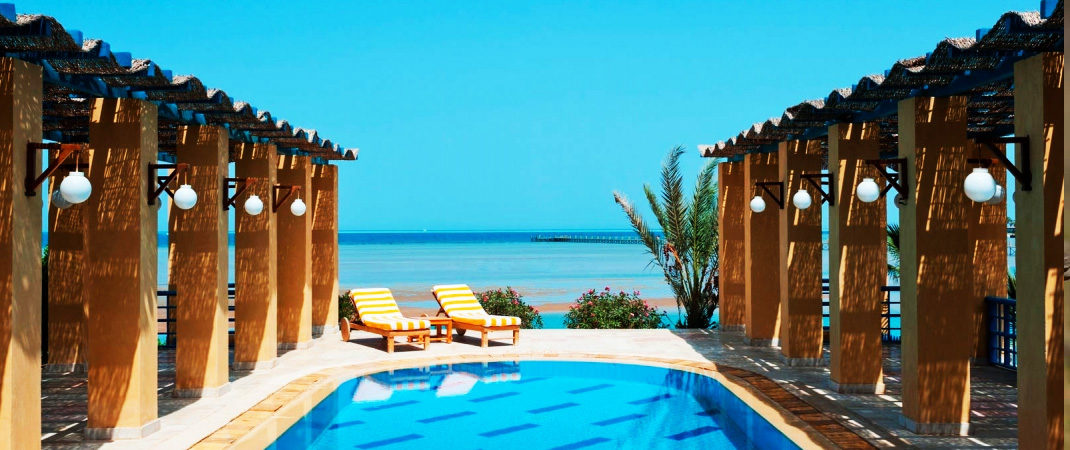Egypt is one of the top holiday destinations, not only in Africa but also in the world. Before the social upheaval that started in 2012, in excess of 12 million visitors travelled to Egypt annually. But this north African holiday destination has been receiving visitors from abroad for a very long time. Ancient Romans and Greeks visited Egypt as early as 4 BC. Egypt, located at the northeastern corner of Africa, is bordered by the Red Sea and the Mediterranean Sea. The very arid Sahara and Sinai deserts cover 95% of Egypt.
Egypt – Land of Wonderful Sights and Sounds
Cairo, the country’s capital city, and the largest city in Africa, is just east of the Great Pyramds and the Sphinx. Visitors who journey up the Nile River by felucca ( a nile Sailboat) or river steamer or cover the Luxor, Aswan and Abu Simbel touring circuit by road or rail have many opportunities to see birds such as the laughing doves, pied kingfishers, and crested hoopoes, but no large wild mammals. The Kharga and Dakhla oases, accessible by road west of Luxor are home to desert birds, reptiles and such mammals as the sand fox and fennec. East of Abu Simbel on Lake Nasser, Gebel Elba is a range of hill with relict stunted woodland savanna, very unlike the barren hills elsewhere in Egypt.
Today, Egypt has the 2nd highest population in Africa, after Nigeria. There are 3 main racial groups: the Hamito-semites of the Nile (including the Berbers of Siwa in the Western Desert), Bedouin Arab nomads, who migrated from Arabia and live mostly in Sinai, and the Nubians, who inhabit the Aswan area.
Egypt Tour Highlights
Cairo – Witness life and death in equal proportion in this timeless city
Luxor – Explore the temples and tombs of this ancient city of Thebes
Alexandria – Admire the colonial splendour of Egypt
Abu Simbel – Sense Pharaoh Ramses II’s vanity in the monumental Great Temple.
Climate and When to Visit Egypt for Vacation
From December to February, Lower Egypt (Cairo and north) is often overcast and chilly, with regular downpours of rain in Alexandria, and below-zero temperatures at night in Sinai, while upper Egypt (south of Cairo) is warm with clue blue skies. Between June and September, temperatures range from 31 degrees C on the Mediterranean coast to an unbearable 50 degrees C in Awan!
The best time to visit Egypt would therefore be in spring (March to April) or Autumn (October and November) when you should pack for hot weather in the south and include a light jacket for the north.
History, Sea and Sun
Travellers into Egypt come mainly for 2 main reasons. On the one hand, there are those who would like to re-connect with history and marvel at the acts and deeds of the ancients gods and kings. They come to admire the 4,000 year old Pyramids of Giza and sail past the palm-reckled banks of the Nile River. In Cairo’s Egyptian Museum, you can see Tutankhamun’s death mask and the mummified remains of ancient kings.
Then, just outside the city, you can stand in the shadow of the Great Pyramid and the Sphinx. In Luxor, meanwhile, you can explore the Valley of the Kings and the Temple of Karnak, which is the largest ancient religious site in the world.
On the other hand, there are visitors to come to Egypt for the sun, sea and sand. The beautiful resorts of Hurghada, Sharm El Sheikh and Taba give holiday makers alluring call to enjoy the Red Sea. Here, one finds also some of the best scuba diving sites in the worlds. Sun, sea and sand top the order of business in the Red Sea and Sinai. The thousands of miles of white sand here keep some tourists bound for their entire holiday. And the world-class coral reefs mean that other visitors spend their getaways underwater.
The Great River Nile
If water could talk, the Nile would have some tales to tell. The longest river in the world was the silent witness to the creation of the world’s first civilized state, the ancient Egyptians believed it was the causeway between life and death and, more recently, it’s carried its fair share of VIPs along its length.




Leave a Reply